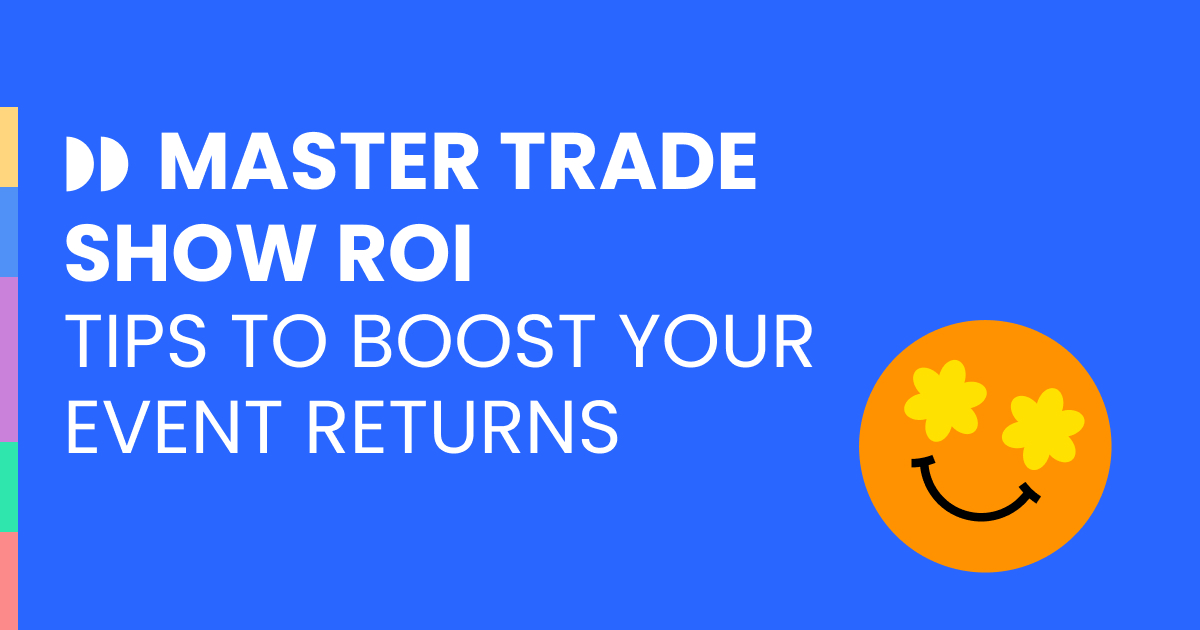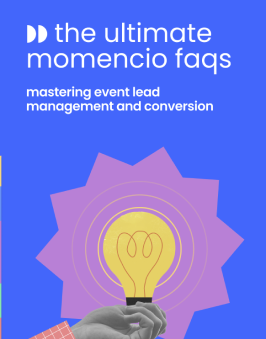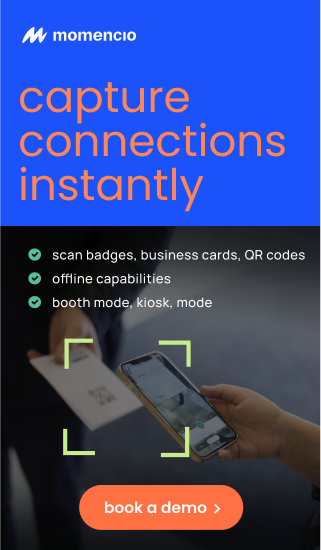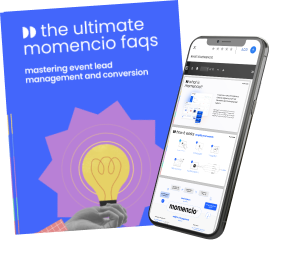Trade show marketing is an effective strategy for companies to increase sales and interact with their target audience. As marketing budgets have grown in general, analyzing and quantifying trade show ROI has become more important.
But what exactly is trade show ROI? It denotes the net value an event marketer generates after deducting the cost of producing the event. Understanding how to calculate trade show ROI is critical to ensuring the event’s efficacy and impact and establishing goals for future events.
TL;DR: Learn how to measure event success using key ROI metrics such as lead generation, attendee engagement, and conversion rates. This guide provides strategies for collecting and analyzing data to evaluate your event’s impact and optimize future performance.
What exactly is trade show ROI?
The return on investment you see after holding an event is known as trade show ROI. After putting in the time, effort, and money to put on the event, calculating your return on investment provides insight into how lucrative and stable the event was.
Did you create a sense of community? Earn more money than you put in? Obtain fresh business leads?
Trade show ROI is important since it provides unambiguous data. With data, you can make better choices, execute better events, and fulfill your objectives with pinpoint accuracy, whether soft (attendee engagement, brand awareness) or hard (dollars earned).
Recognizing the importance of trade show ROI
Before getting into the analytics, let’s discuss why tracking trade show ROI is important. Events are more than simply get-togethers; they are also opportunities. Possibilities for connecting with prospective consumers, generating leads, showcasing goods or services, and increasing brand awareness. However, determining the true effect of these events on your organization is difficult without precise assessment.
Trade show ROI measures how well your event met its objectives with the resources spent in its most basic form. It assists you in determining if your event planning, execution, and engagement methods were effective or need to be adjusted.
The formula for calculating trade show ROI
Learning how to calculate trade show ROI begins with understanding the formula. Most events are planned with a particular financial purpose in mind: to make a profit. This is often derived via registration or ticket purchases. If this describes you and your business, calculating trade show ROI is rather simple, at least on a basic level.
To calculate trade show ROI, just remove the entire cost of your conference or event from the total income earned from sales, then divide the event’s overall cost by the event’s total cost. Following that, the value is shown as a percentage. Simply increase that figure by 100 to get your trade show ROI.
What is a good ROI for a trade show?
The definition of good trade show ROI varies based on the objectives you establish for the event! This may be generating a specific income, attracting 20 attendees for a certain amount of marketing dollars, or any other statistic that moves you closer to your yearly objectives.
Before planning your event, you must establish and strategize to achieve your objectives. Remember that excellent ROI means reaching your objectives; great trade show ROI implies surpassing them!
If you feel like you squandered money or didn’t achieve your goal, that’s a poor ROI.

Metrics to monitor for trade show ROI
Here are some particular trade show ROI metrics to track:
a. CAC (Customer Acquisition Cost)
Determine the cost of obtaining each new client through the event. Subtract the overall event costs from the number of new clients obtained.
b. CLV (Customer Lifetime Value)
Determine the average revenue a client makes from the event during their lifetime. This aids in determining the long-term effect.
c. Conversion Rate of Leads
Calculate the proportion of event leads who become paying clients. This indicator measures the effectiveness of your lead nurturing and follow-up efforts.
d. ROMI (Return on Marketing Investment)
Compare the event’s financial results to the marketing cost linked with the event. ROMI assists you in determining the influence of marketing on trade show ROI.
How to measure trade show ROI
1. Establish main goals
Determine the primary event goals, such as generating qualified leads, recruiting staff, increasing brand awareness, or introducing a new product. Defining core objectives is critical for determining success.
2. Establish quantifiable goals
Divide event marketing ROI into hard (quantitative) and soft (qualitative) KPIs. Hard metrics include quantifiable indicators such as attendance, newspaper coverage, and social media mentions, and soft analytics include intangibles such as community sentiment.
3. Acquire data
Use technologies like event registration systems and analytics tools to get useful data consistent with your goals. These insights may include ticket sales, income, attendance, social media activity, etc.
4. Analyzing results
After gathering pertinent data, examine the outcomes to determine the success of your event. Compare goals and objectives met, determine cost per lead or acquisition, and find improvement or cost reduction opportunities.
5. Evaluate ROI improvement
Finally, track multiple metrics to see how your trade show ROI is improving:
New versus returning attendees: Determine how many people are new to your events vs. those who have previously attended since this will indicate your event’s potential to attract new attendees.
Attendance percentage: Determine the proportion of registered attendees who attended to evaluate attendee engagement better.
Ticket and coupon performance: Assess the efficacy of various ticket kinds or promotional offers.
Total revenue: Keep track of the total income produced by the event.
Measuring event impact and making use of digital marketing
The measurement of event impact extends beyond the time of the event. It entails monitoring the impact of your event on lead generation, brand awareness, and revenue growth in the weeks and months afterward. Using digital marketing collateral like post-event emails and customized microsites may help with continuing engagement and impact evaluation.
Exhibitor success strategies and trade show tools that focus on ROI
Exhibitor success methods are critical for both exhibitors and sponsors. Metrics such as booth traffic, lead quality, and conversion rates are critical success indicators. Using ROI-focused event technologies may assist exhibitors in optimizing their presence and efficiently measuring the return on their investment.
Taking advantage of a comprehensive solution: momencio
When improving Event ROI and assessing event performance, having the correct tools at your disposal is critical. momencio excels in this role. momencio’s extensive feature set facilitates event planning, execution, and ROI evaluation.
momencio provides a complete solution for event planners, field marketers, and exhibitors, from real-time event data and attendee engagement monitoring to automated lead gathering and customized follow-up.












